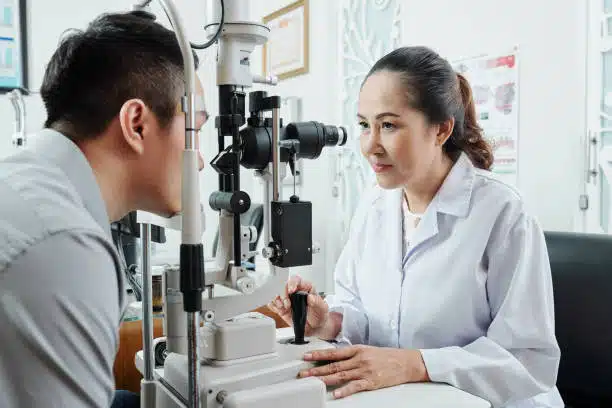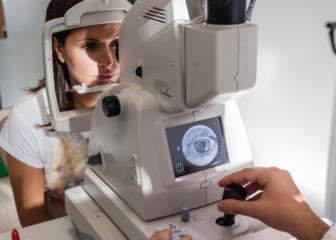How an Eye Doctor Can Help Avoid Vision Problems in Chino
How an Eye Doctor Can Help Avoid Vision Problems in Chino
Blog Article
Checking Out the most up to date Technical Improvements in Optometry and What They Mean for Eye Doctors
In the ever-evolving area of optometry, recent technical advancements are reshaping just how professionals come close to eye care. From the precision of Optical Coherence Tomography to the nuanced understandings offered by AI-driven diagnostic tools, these technologies are establishing brand-new standards in patient assessment and therapy. Teleoptometry is positioned to redefine accessibility, guaranteeing that expertise transcends geographical limitations. As these improvements permeate the technique, eye doctors are encountered with the difficulty of welcoming these devices to boost client results. The inquiry remains: just how will these technical shifts redefine the functions and duties within the profession?
Innovations in Diagnostic Tools
Progressing the area of optometry, technologies in analysis devices have actually reinvented the way eye treatment experts assess and diagnose visual impairments and ocular problems. The previous decade has actually witnessed significant technological innovations, making it possible for more detailed and exact assessments.
Another trick development is the introduction of innovative corneal topography systems, which map the surface curvature of the cornea with accuracy. These devices are especially useful for fitting contact lenses and identifying corneal disorders. Additionally, digital retinal imaging has actually changed traditional ophthalmoscopy, using in-depth, breathtaking sights of the retina that help with comprehensive aesthetic exams.
The advancement of wavefront aberrometry has also been vital, allowing the analysis of refractive mistakes with unmatched precision (Eye Doctor). This technology helps in customizing restorative lenses and boosting medical results for refractive surgical treatments. Jointly, these diagnostic innovations empower optometrists to supply exceptional patient treatment, making certain very early intervention and tailored therapy strategies, eventually improving aesthetic health results
AI in Individual Monitoring
Building on the structure of innovative analysis devices, the incorporation of expert system (AI) in individual administration represents a transformative leap for optometry. AI systems are increasingly employed to improve performance, accuracy, and customization in patient treatment. By examining vast quantities of data, AI can recognize patterns and anticipate possible ocular conditions, allowing eye doctors to customize interventions more efficiently. This capacity is essential in handling chronic eye diseases such as glaucoma and diabetic person retinopathy, where early discovery and constant monitoring are vital.
Furthermore, AI-driven platforms promote structured individual interactions and administrative processes. Automated scheduling, online assessments, and customized follow-up strategies not only boost person contentment yet additionally enhance time administration for practitioners. These systems can triage clients based on the urgency of their conditions, making certain that those in important demand get punctual interest.
Moreover, AI enhances decision-making by giving optometrists with evidence-based recommendations and treatment pathways. By integrating data from electronic wellness documents, AI devices offer understandings that inform scientific decisions, minimizing the danger of errors and enhancing patient results. As AI remains to develop, its duty in individual administration will likely increase, improving the landscape of optometric care.
Advances in Retinal Imaging
In the realm of optometry, retinal imaging has experienced exceptional technical improvements that are boosting analysis abilities and person treatment. Developments such as Optical Comprehensibility Tomography (OCT) and fundus photography have transformed exactly how eye doctors analyze the retina and visualize. OCT, particularly, supplies high-resolution, cross-sectional photos of the retina, enabling the thorough examination important site of its layers. This capability is vital for very early discovery and monitoring of conditions like glaucoma, diabetic person retinopathy, and age-related macular degeneration.
Enhanced imaging modalities like OCT angiography are further refining diagnostic accuracy. This non-invasive technique maps blood circulation in the retina, offering essential insights into vascular wellness without the need for color injections. Furthermore, flexible optics modern technology is being incorporated into retinal imaging systems to deal with ocular aberrations, providing unprecedented picture quality. Such developments promote the recognition of minute retinal adjustments that could symbolize disease progression.
In addition, improvements in artificial intelligence are enhancing retinal imaging by allowing automatic analysis of large datasets. These systems help optometrists in identifying patterns a measure of pathology, thus improving analysis accuracy and performance. Collectively, these innovations are transforming retinal imaging into a cornerstone of contemporary eye treatment, improving outcomes and expanding healing possibilities.
Teleoptometry's Growing Function
Teleoptometry is increasingly ending up being a vital part of eye treatment, driven by developments in electronic communication and analysis devices. As optometry embraces digital change, teleoptometry promotes remote appointments, permitting eye doctors to expand their services beyond conventional boundaries. This is specifically useful in underserved and rural locations where accessibility to specialized eye care is commonly minimal. By leveraging high-resolution video conferencing and advanced retinal imaging, optometrists can perform comprehensive eye examinations from afar, guaranteeing timely medical diagnosis and therapy.
The integration of fabricated knowledge (AI) more boosts teleoptometry, making it possible for the evaluation of aesthetic data and assisting in the detection of eye problems such as glaucoma and diabetic person retinopathy. AI-powered algorithms can rapidly analyze complex imaging data, offering eye doctors with useful insights that strengthen scientific decision-making.
Moreover, teleoptometry supports continuity of care with seamless integration with electronic wellness documents (EHRs), allowing eye doctors to keep detailed client histories. over at this website This makes certain that patients get personalized and regular care even when seeking advice from with various experts.
Regardless of these advantages, obstacles stay, including making certain information protection and handling individual expectations. Teleoptometry stands for a considerable stride towards more available, effective, and patient-centered eye care. As technology develops, its role is poised to expand further.

Future Patterns in Eye Treatment
A myriad of ingenious patterns is established visit the website to reshape the future of eye treatment, driven by technical developments and the advancing demands of people. One substantial trend is the assimilation of expert system (AI) in diagnostics, which promises to improve the precision and effectiveness of eye exams. AI formulas can analyze substantial amounts of data from retinal images, potentially spotting problems like diabetic person retinopathy and glaucoma earlier than conventional approaches.
In addition, personalized medication is obtaining grip in optometry, with genetic screening notifying tailored therapy plans. This approach aims to maximize client outcomes by customizing treatments to specific genetic profiles. Wearable modern technology, such as wise contact lenses, is additionally coming up, using real-time tracking of intraocular stress or glucose degrees, therefore supplying continuous understandings into systemic and ocular health.
The adoption of increased fact (AR) and digital reality (VR) in training and individual education and learning is another arising pattern. These technologies use immersive experiences that can improve understanding and skills both for patients and eye doctors. As these fads develop, eye doctors have to stay abreast of technological developments to provide advanced care, guaranteeing better person end results and satisfaction in the dynamic landscape of eye care.
Conclusion

Jointly, these analysis innovations empower eye doctors to supply superior patient treatment, ensuring very early treatment and customized treatment techniques, eventually enhancing aesthetic health and wellness results.

As these innovations continue to progress, optometrists need to adapt and incorporate them into method, ultimately optimizing operations performance and raising the requirement of eye treatment provided to people.
Report this page